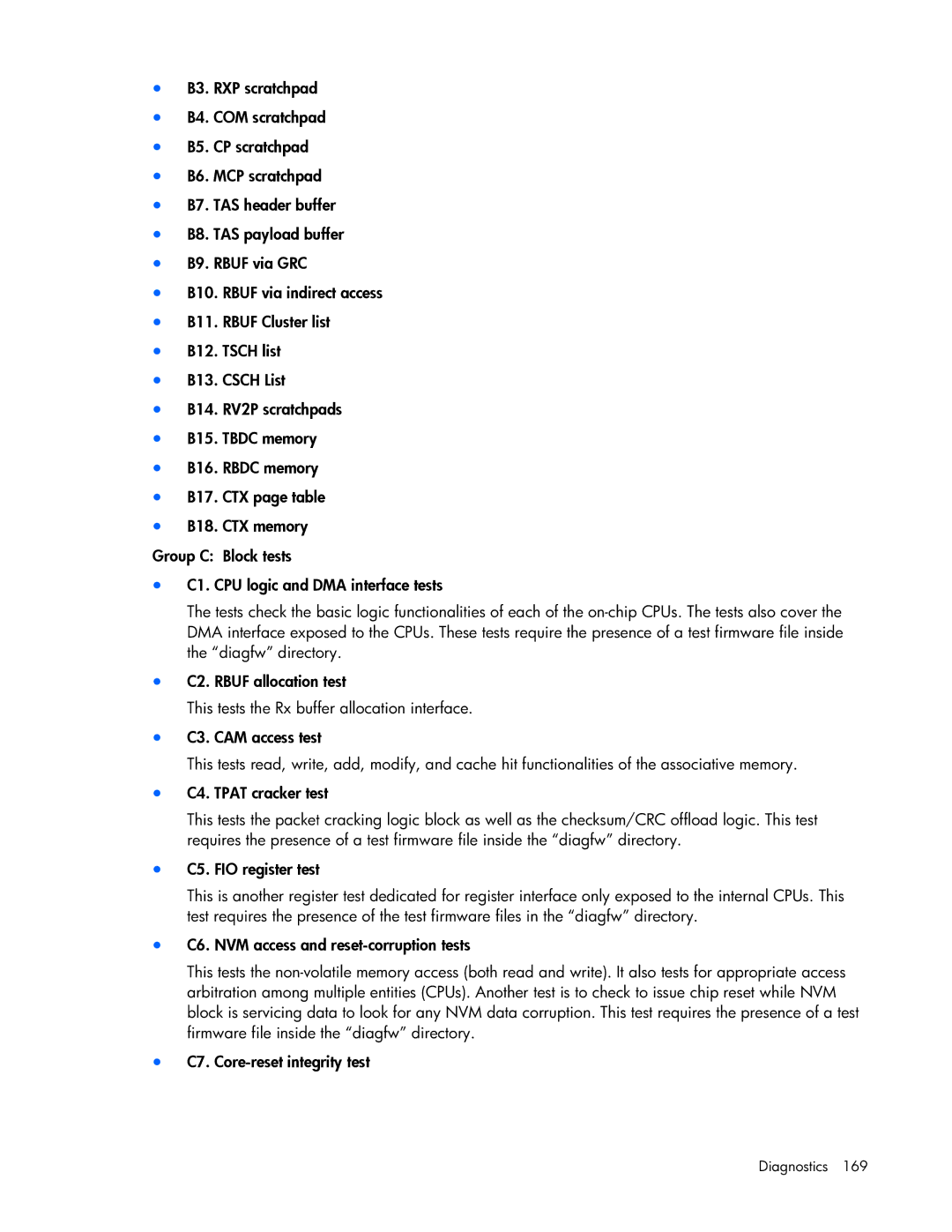•B3. RXP scratchpad
•B4. COM scratchpad
•B5. CP scratchpad
•B6. MCP scratchpad
•B7. TAS header buffer
•B8. TAS payload buffer
•B9. RBUF via GRC
•B10. RBUF via indirect access
•B11. RBUF Cluster list
•B12. TSCH list
•B13. CSCH List
•B14. RV2P scratchpads
•B15. TBDC memory
•B16. RBDC memory
•B17. CTX page table
•B18. CTX memory
Group C: Block tests
•C1. CPU logic and DMA interface tests
The tests check the basic logic functionalities of each of the
•C2. RBUF allocation test
This tests the Rx buffer allocation interface.
•C3. CAM access test
This tests read, write, add, modify, and cache hit functionalities of the associative memory.
•C4. TPAT cracker test
This tests the packet cracking logic block as well as the checksum/CRC offload logic. This test requires the presence of a test firmware file inside the “diagfw” directory.
•C5. FIO register test
This is another register test dedicated for register interface only exposed to the internal CPUs. This test requires the presence of the test firmware files in the “diagfw” directory.
•C6. NVM access and
This tests the
•C7.
